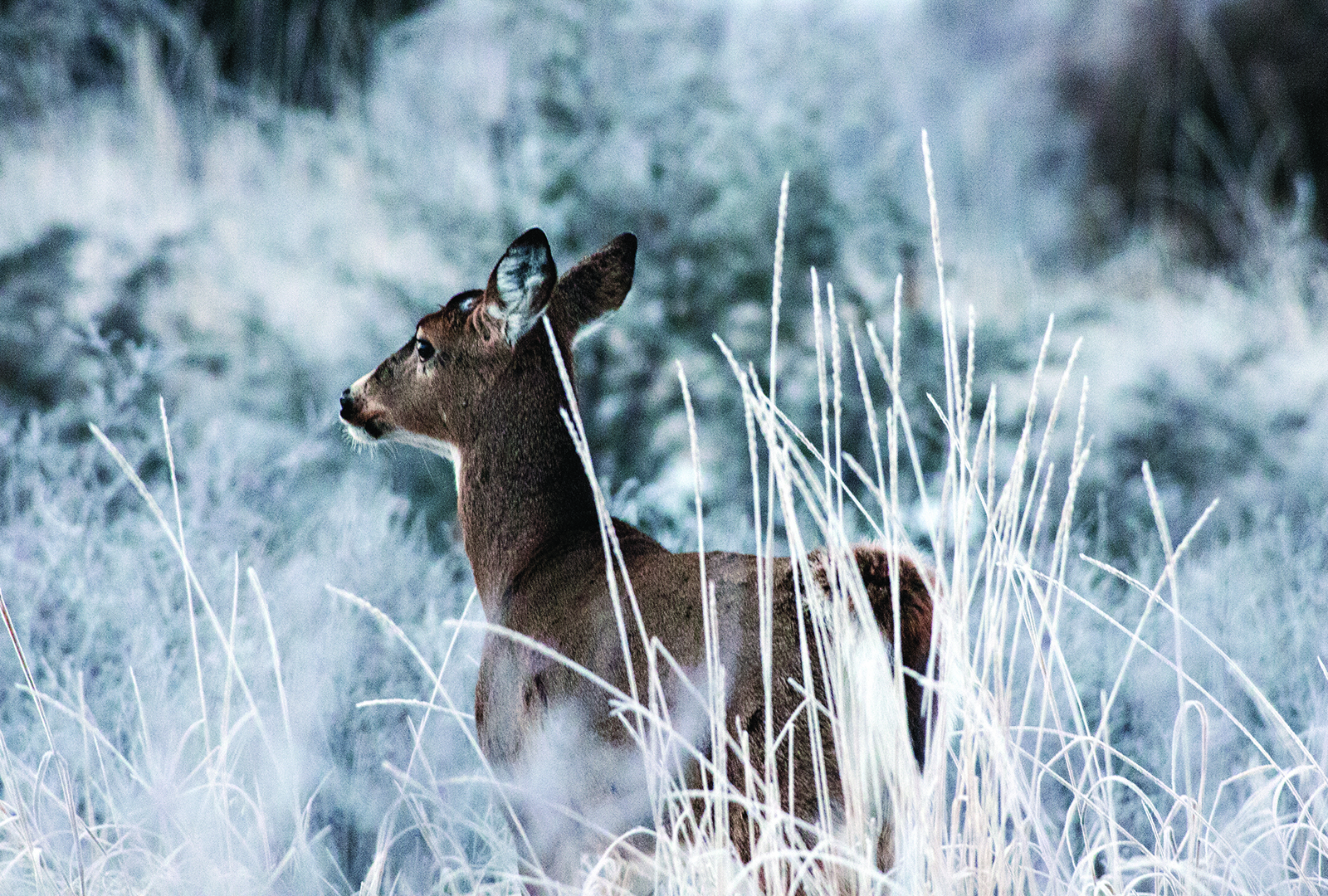Mule Deer on Flathead Indian Reservation Tests Positive for CWD
Evidence of the contagious neurological disease in the Flathead Valley first emerged last fall; this is the first detection of chronic wasting disease by wildlife officials with the Confederated Salish and Kootenai Tribes
By Tristan Scott
Wildlife officials with the Confederated Salish and Kootenai Tribes (CSKT) said a hunter-harvested mule deer on the Flathead Indian Reservation near Elmo has tested positive for chronic wasting disease, marking the first confirmed CWD-positive deer on reservation land and providing further evidence that the neurological disease is spreading in northwest Montana following its initial detection in wild populations of Flathead Valley deer last fall.
The detection of CWD occurred Jan. 6 in the Hog Heaven Management Zone of CSKT’s Flathead Indian Reservation and was announced publicly by the Tribes’ Division of Fish, Wildlife, and Recreation and Conservation.
“The CSKT Wildlife Program is implementing the initial response protocol from the Tribe’s CWD Surveillance and Management Plan,” CSKT officials stated in the news release. The response will include the collection of samples from 150 mule deer harvested from Hog Heaven and other herds along Montana Highway 28 near Elmo to determine CWD prevalence.
There is no known transmission of CWD to humans. However, the Centers for Disease Control and Prevention (CDC) recommends that hunters harvesting a deer, elk, or moose from an area where CWD is known to be present have their animal tested for CWD prior to consuming the meat and do not consume the meat if the animal tests positive.
Rich Janssen, head of CSKT’s Natural Resources Division, said the confirmation of CWD on the Flathead Indian Reservation is a red flag for a community whose members consume wild game for both subsistence and for cultural significance, and could have long-range consequences for a wildlife-rich region around Flathead Lake.
“It is extremely important for the health of our Tribal people and our big game herds that any deer, elk or moose harvested from this area is tested for Chronic Wasting Disease before consumption,” he said. “There is currently no vaccine for CWD, and if it were to spread to humans it would likely be through consuming infected meat.”
The highly contagious neurological disease infects members of the deer family, called ungulates, including elk, moose, mule deer, and white-tailed deer. It is always fatal, and there is no known cure. It was first detected in Montana’s wild herds in 2017.
Since then, the disease has turned up in isolated geographic pockets with increasing frequency, culminating last fall when a white-tailed deer at the Flathead County landfill tested positive, marking the first time CWD has been detected in a wild herd in Montana Fish, Wildlife and Parks’ Hunting District 170, which encompasses most of the Flathead Valley. The detection occurred just days before the start of general hunting season and has led to 12 additional detections in local deer populations, prompting officials with Montana Fish, Wildlife and Parks (FWP) to take lethal measures to remove all deer from the landfill as a measure to reduce the further spread of the disease.
Detections of the disease have been far more prevalent in hunting districts west of Kalispell, running north along the Cabinet and Purcell mountain ranges to the U.S.-Canada border. In those districts — 103, 104 and 100 — wildlife officials had confirmed 218 positive detections of CWD as of Jan. 17. Across Montana, wildlife officials have detected CWD in 335 animals out of 9,066 samples tested, according to a statewide dashboard. The disease was confirmed in 202 white-tailed deer, 127 mule deer and 6 elk.
CWD is caused by infectious, mis-folded proteins called prions, which spread among cervids such as deer, elk, and moose and through environmental contamination.
The disease isn’t known to infect people, but experts fear it could cause illness similar to the prion disease bovine spongiform encephalopathy (“mad cow” disease).

FWP has documented CWD in wild cervids across much of Montana through surveillance that began in 2017. In 2019, FWP sampled 7,000 wild deer, elk, and moose across the state, focusing on high-priority areas like the Hi-Line, the Philipsburg area, southeastern Montana, and the Libby area. Of the samples, 144 tested positive for the fatal disease, including 53 mule deer, 88 white-tailed deer, two moose and one elk. These were Montana’s first detections in moose and wild elk.
In 2019, a white-tailed doe in the Libby area marked the first time the disease had been detected west of the Continental Divide in Montana. In response, FWP set up a priority surveillance area surrounding Libby and detected 60 positive cases in the area, almost exclusively in white-tailed deer.
In 2020, livestock officials reported the disease was detected in a captive game farm animal in the Flathead Valley, signaling the first time CWD had been confirmed in northwest Montana outside of the Libby area, where it has been gaining prevalence since 2019. The Department of Livestock withheld the precise location and the type of animal that tested positive to protect the property owner’s identity.
CWD was first detected in captive game farms in Montana in 1999. The following year, a voter’s initiative passed banning new game farms, prohibiting existing game farms from being sold or transferred, and outlawing “canned” hunts inside game farms. Montana’s remaining game farms are “grandfathered in,” including the “alternative livestock producer” in the Flathead.